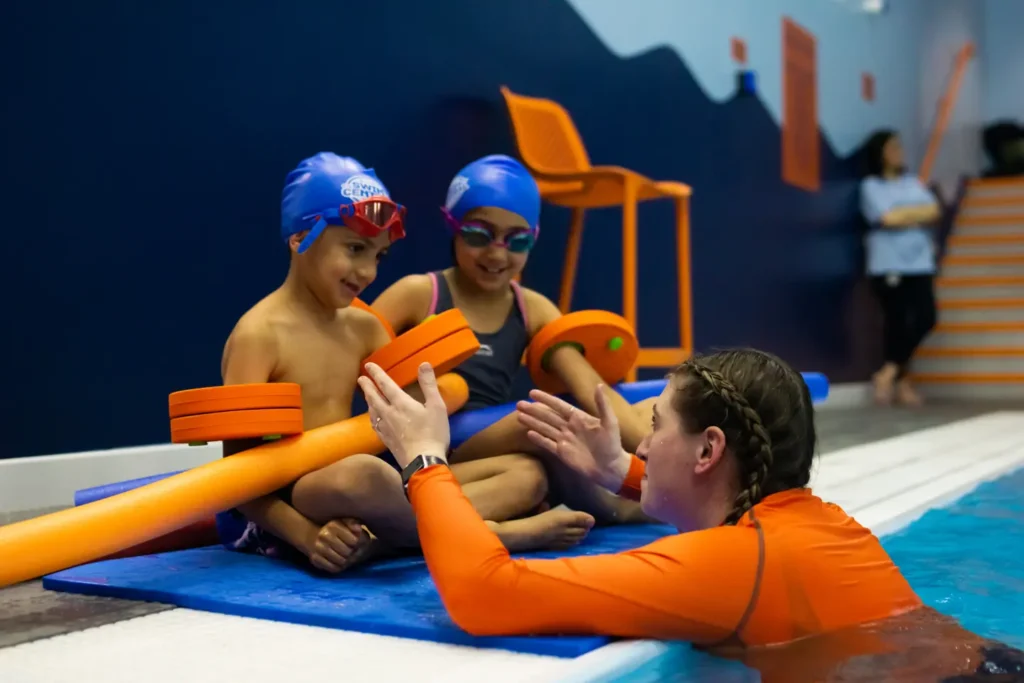England has seen an alarming 85% increase in child drownings between 2019 and 2022, with 87% of these tragic incidents occurring in home pools or hot tubs. As a parent, ensuring your child’s safety around water is paramount so that’s why we’ve compiled 8 safety rules that every parent must know and share with their children to protect them in and around the pool.
Before your child enters the pool, it’s essential to communicate these fundamental safety rules. Instilling these habits early on will help ensure your child’s safety and give you peace of mind
1. Always inform an adult before going to the pool
This rule is crucial for maintaining supervision and accountability. When a child informs an adult before heading to the pool, it ensures that a responsible person is aware of their location and can monitor their safety. This practice also helps in case of emergencies, as adults will know where to find the child if needed. Make it a non-negotiable habit for your child to always check in with you or another trusted adult before approaching any body of water.
2. Walk, don’t run, near the pool
Pool areas are often wet and slippery, making them hazardous for running. By insisting that children walk, you significantly reduce the risk of slips, falls, and potential injuries.
3. Use appropriate safety gear or flotation devices
Proper safety equipment can be a lifesaver, especially for inexperienced swimmers. Teach your child about different types of flotation devices and when to use them. For example, arm floaties for beginners, swim vests for intermediate swimmers, and pool noodles for added support.
4. Seek adult help if a friend falls into the pool
It’s natural for children to want to help their friends, but attempting a water rescue can be extremely dangerous. Teach your child that the safest action is to immediately alert the nearest adult. Explain that even strong swimmers can struggle when trying to rescue someone, and that by getting adult help quickly, they’re actually doing the best thing for their friend.
5. Avoid jumping on friends in the water
While it might seem fun, jumping on friends in the pool can lead to serious accidents. A playful jump could result in unintentional submersion, especially for smaller children or weaker swimmers.
6. Check surroundings before diving
Diving injuries can be severe and life-altering. Teach your child to always check the depth of the water and look for any obstacles before diving. Explain that water depth can be deceptive and that many pools are not deep enough for safe diving. Encourage them to enter the water feet-first if they’re unsure about the depth or conditions.
7. Never push others into the water
Unexpected entry into water can be terrifying and dangerous. A person who is pushed might panic, inhale water, or hit their head. Moreover, they might not be dressed for swimming or could have electronics in their pockets. Teach your child to respect others’ boundaries and understand that what seems like a harmless prank could have serious consequences.
8. Don’t reach for objects in the pool
Leaning over to retrieve items from the pool can easily lead to accidental falls. The shift in balance, especially on a wet surface, can cause a child to topple into the water unexpectedly. Teach your child to always ask an adult for help when retrieving objects from the pool. This rule also encourages children to keep toys and non-swimming items away from the pool’s edge, promoting a safer pool environment overall.
Building Water Confidence
While these safety rules are crucial, one of the best ways to keep your child safe around water is to ensure they know how to swim. Confidence in the water is not just about enjoyment; it’s a vital skill that can save lives. To help your child develop this essential ability, consider several key strategies.
First and foremost, prioritise swimming lessons. At Swim Central, our highly qualified instructors offer a range of classes from baby swim to adult lessons. Professional instruction helps children develop proper techniques and adapt to various water conditions. This structured learning environment is invaluable in building a strong foundation for water safety.
Alongside formal lessons, increase your child’s water exposure. Regular practice of basic skills like kicking, floating, breath-holding, and stroke repetition can significantly improve your child’s comfort in the water. Combining this practice with formal lessons yields optimal results, reinforcing what they learn in class and building muscle memory for crucial water skills.
However, even as your child becomes more proficient in the water, maintaining constant attention remains crucial. When your child is in or around water, avoid distractions like mobile phones, as water conditions can change rapidly. Remember, accidents can happen in seconds, so your undivided focus is essential, regardless of your child’s swimming ability.
By implementing these strategies alongside the core safety rules, you’ll not only help your child build the confidence they need to be safe in the water but also instil a lifelong respect for water safety.

